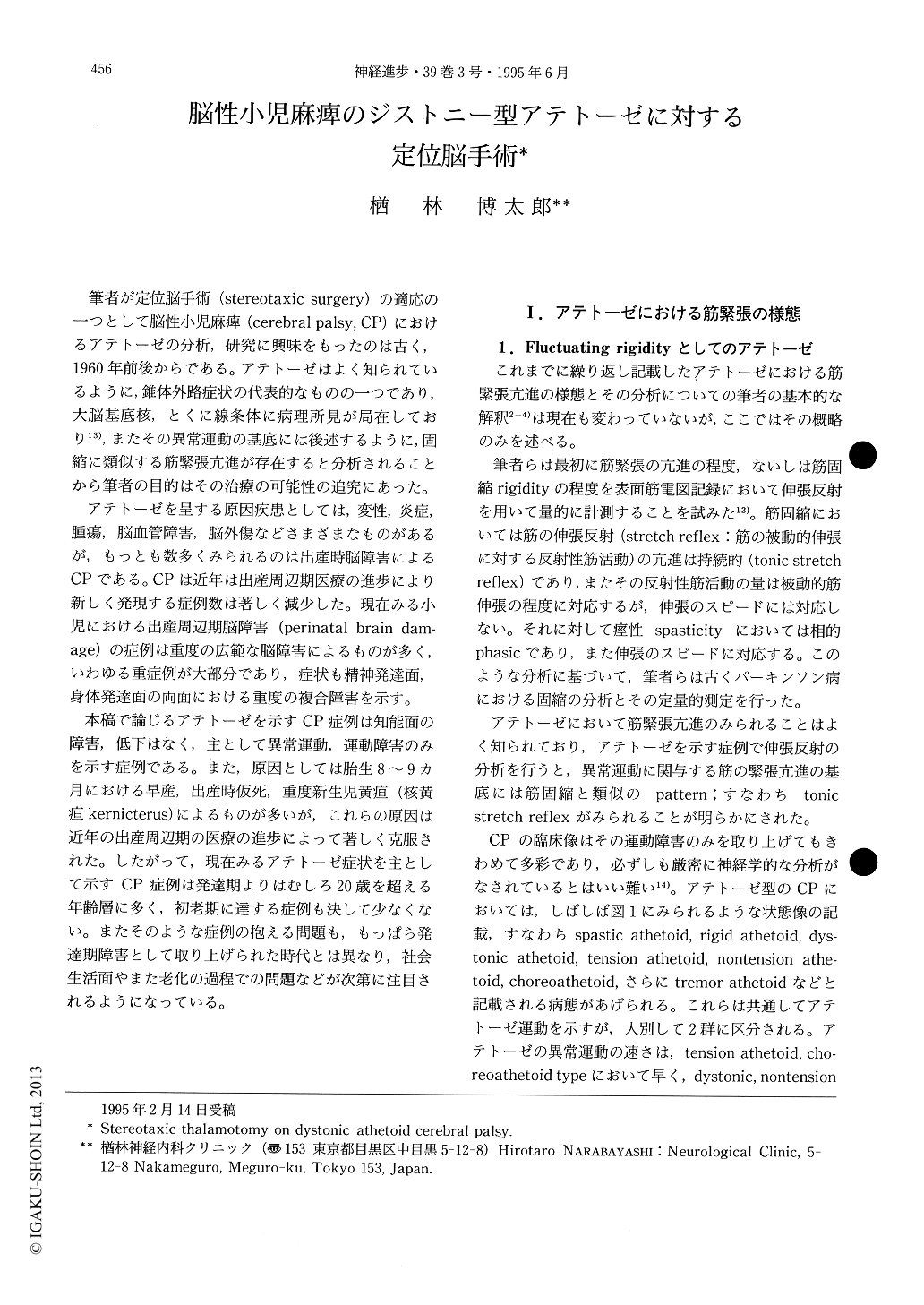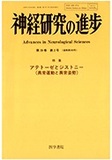Japanese
English
- 有料閲覧
- Abstract 文献概要
- 1ページ目 Look Inside
筆者が定位脳手術(stereotaxic surgery)の適応の一つとして脳性小児麻痺(cerebral palsy,CP)におけるアテトーゼの分析,研究に興味をもったのは古く,1960年前後からである。アテトーゼはよく知られているように,錐体外路症状の代表的なものの一つであり,大脳基底核,とくに線条体に病理所見が局在しており13),またその異常運動の基底には後述するように,固縮に類似する筋緊張亢進が存在すると分析されることから筆者の目的はその治療の可能性の追究にあった。
アテトーゼを呈する原因疾患としては,変性,炎症,腫瘍,脳血管障害,脳外傷などさまざまなものがあるが,もっとも数多くみられるのは出産時脳障害によるCPである。CPは近年は出産周辺期医療の進歩により新しく発現する症例数は著しく減少した。現在みる小児における出産周辺期脳障害(perinatal brain damage)の症例は重度の広範な脳障害によるものが多く,いわゆる重症例が大部分であり,症状も精神発達面,身体発達面の両面における重度の複合障害を示す。
Several subtypes of athetosis in cerebral palsy (CP) were described and analyzed in relation to the muscular hypertonus. Dystonic athetoid, rigid athetoid and nontension athetoid types were interpreted as the state of fluctuating rigidity, which can be quantitatively assessed by the pattern and amount of tonic increase of muscle stretch reflexes, similarly as in parkinsonian rigidity. Such hypertonic state can be relieved by stereotaxic surgical lesioning of the ventrolateral nucleus of the thalamus, although grade of improvement is milder in comparison with that in parkinsonian rigidity.

Copyright © 1995, Igaku-Shoin Ltd. All rights reserved.


